- Joined
- Aug 11, 2008
It's been almost a year since since my Venomous X and 8800GTX became more than friends, after eying each other across the PCB of a EVGA E760 Classified for about 4 months. Some of you may remember when they finally tied the knot (or zipped the tie) not so long ago.
Now the story of the rise, fall, and rebirth of a SS. Shortly after the union of the VX and 8800GTX, a newcomer appeared with promises of enough cold for everyone. As the CPUs grew, it wasn't long (~5 months) before they noticed his promises of cold starting to dwidle. The SS realized this, and knew he had bit off more than he could chew in coming to this climate in the southeast US. So, the CPUs called out for help from the oppression of the inadequate SS. A hero emerged from the hot and humid land of Atlanta, his name, Cascade. He came in and with nearly 3x the cold, easily overthrew SS from his throne. The SS has been in hiding ever since, embrassed to show his face amongst Cascade and the CPUs he let down. So, what's SS to do when always cast into the shadow of Cascade?
.
.
.
Alright, since you have the background, it's time to begin.
My plan is to try to combine the SS and my CPU loop to make some sort of water chiller. I have no idea if it'll work. It's just an idea I had a while back, and thought it would be fun to test.
Components

Here's the actual setup while filling and bleeding:

Distilled + Anti-Freeze looks like my loop is running on Moutain Dew

Next, I hooked the SS up to the DTek block and put a temp probe in the res:


Now, a couple shots of the setup before the SS was turned on and after about 3 hours of the SS being on:


So, one observation is that it takes FOREVER for the water to cool down. The only reason I stopped when I did was because 1) I needed sleep 2) a lot of condensation. I'm not sure how cold the water would have gotten if I left it on for longer. I didn't insulate because I wanted to see just how much condensation would form. See pics below for condensation:




Here's a couple of evap pics when I was removing everything:


Next steps:
Any help or suggestions would be appreciated
Now the story of the rise, fall, and rebirth of a SS. Shortly after the union of the VX and 8800GTX, a newcomer appeared with promises of enough cold for everyone. As the CPUs grew, it wasn't long (~5 months) before they noticed his promises of cold starting to dwidle. The SS realized this, and knew he had bit off more than he could chew in coming to this climate in the southeast US. So, the CPUs called out for help from the oppression of the inadequate SS. A hero emerged from the hot and humid land of Atlanta, his name, Cascade. He came in and with nearly 3x the cold, easily overthrew SS from his throne. The SS has been in hiding ever since, embrassed to show his face amongst Cascade and the CPUs he let down. So, what's SS to do when always cast into the shadow of Cascade?
.
.
.
Alright, since you have the background, it's time to begin.
My plan is to try to combine the SS and my CPU loop to make some sort of water chiller. I have no idea if it'll work. It's just an idea I had a while back, and thought it would be fun to test.
Components
- EK Supreme HF
- DTek FuZion v1
- MCP355 + XSPC Res Top
- Black Ice Xtreme 360
- Single Stage Phase Unit
- Distilled Water (~50%)
- Anti-Freeze (~50%)
Here's the actual setup while filling and bleeding:
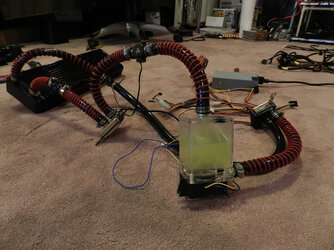
Distilled + Anti-Freeze looks like my loop is running on Moutain Dew
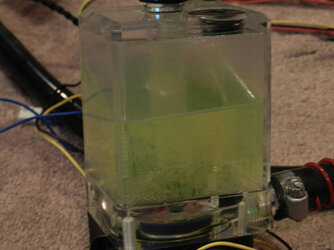
Next, I hooked the SS up to the DTek block and put a temp probe in the res:
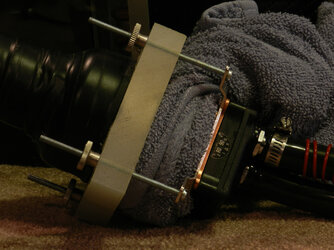
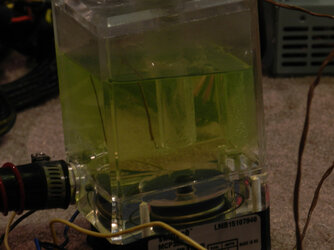
Now, a couple shots of the setup before the SS was turned on and after about 3 hours of the SS being on:
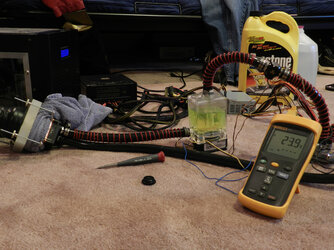
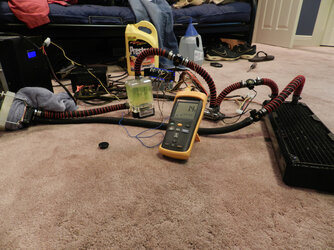
So, one observation is that it takes FOREVER for the water to cool down. The only reason I stopped when I did was because 1) I needed sleep 2) a lot of condensation. I'm not sure how cold the water would have gotten if I left it on for longer. I didn't insulate because I wanted to see just how much condensation would form. See pics below for condensation:
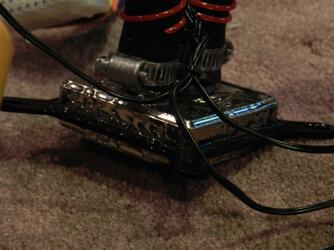
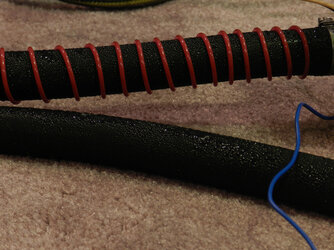
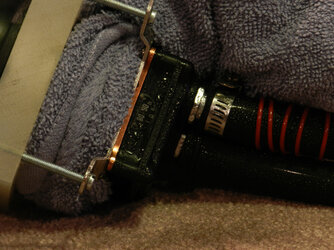
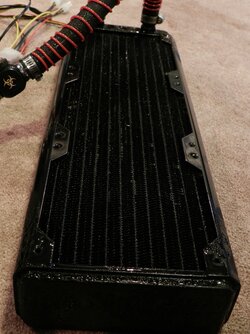
Here's a couple of evap pics when I was removing everything:
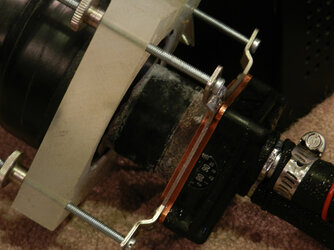
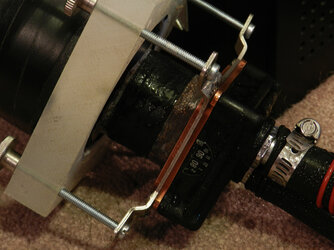
Next steps:
- Insulate the EK block and tubing coming out of it, since that will be on the motherboard.
- Insulate the motherboard socket area.
- Put a heat load into the loop.
Any help or suggestions would be appreciated


